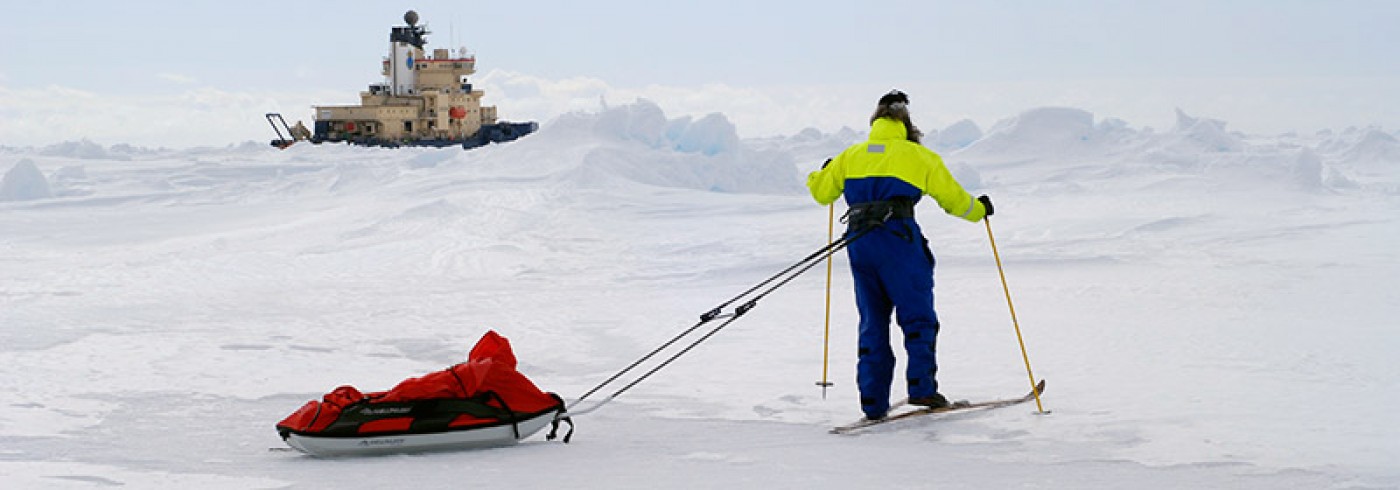Implications of increasing CO2
26 November 2010 - 17 January 2011What is the effect of sea ice and glacial meltwater on the CO2 exchange and calcium carbonate saturation state (i.e., Ω)? We set out to investigate the mechanisms driving the CO2 air−ice−sea flux and ocean acidification (i.e., Ω) in areas of different characteristics in terms of water column stratification, ice cover and extent, and freshwater input in the Amundsen and Ross seas.
The project will provide basic information needed to predict the effects of future changes in CO2 uptake on CaCO3 saturation and ocean acidification in the Southern Ocean due to changes in sea ice extent, freshwater input, and temperature.
Our focus areas were the sea ice-covered parts of the Amundsen Sea and the shelf close to marine out-flowing glaciers and melt ponds on the sea ice.
The research team had the needed chemical and biological expertise to investigate the biogeochemical processes influencing the CO2 system in sea ice, brine, snow, and the water column. We sampled water, sea ice, brine, and snow to measure total alkalinity (AT), pH, nutrients (i.e. nitrate, phosphate, and silicic acid), δ18O, and biological parameters (i.e. PAM fluorometry for photosynthetic activity, bacteria, taxonomy, and pigments). Water column samples were collected and combined with a CTD sensor. δ18O was sampled and nutrient samples were filtered and frozen for postcruise analysis. Sea ice was sampled for temperature measurements every 5 cm directly after recovery. Salinity and conductivity were measured in the melted sea ice, brine, and snow samples. Snow density and temperature were measured and snow grain structure and size were investigated using a camera and optical software.
AT was determined by means of potentiometric titration using 0.05 M HCl; pH was determined spectrophotometrically using m-cresol purple as an indicator.
We estimated the Ω and total inorganic content in the water column, brine, and sea ice using AT and pH. We used AT and δ18O salinity relationships to derive freshwater fractions and estimate source waters. Based on this, we will investigate the effect of glacier and sea ice meltwater and Circumpolar Deep Water on Ω. Inter-annual variability will be studied using three years of data.
The data will be presented at scientific conferences and used in peer-reviewed publications. The data will also be contributed to the Surface Ocean CO2 Atlas (SOCAT) and GLODAP database.








